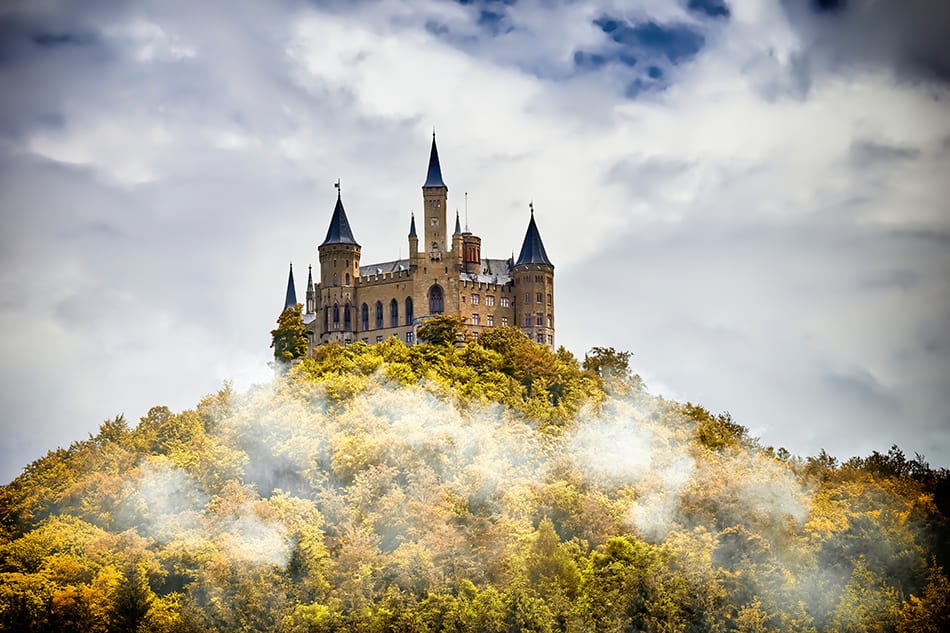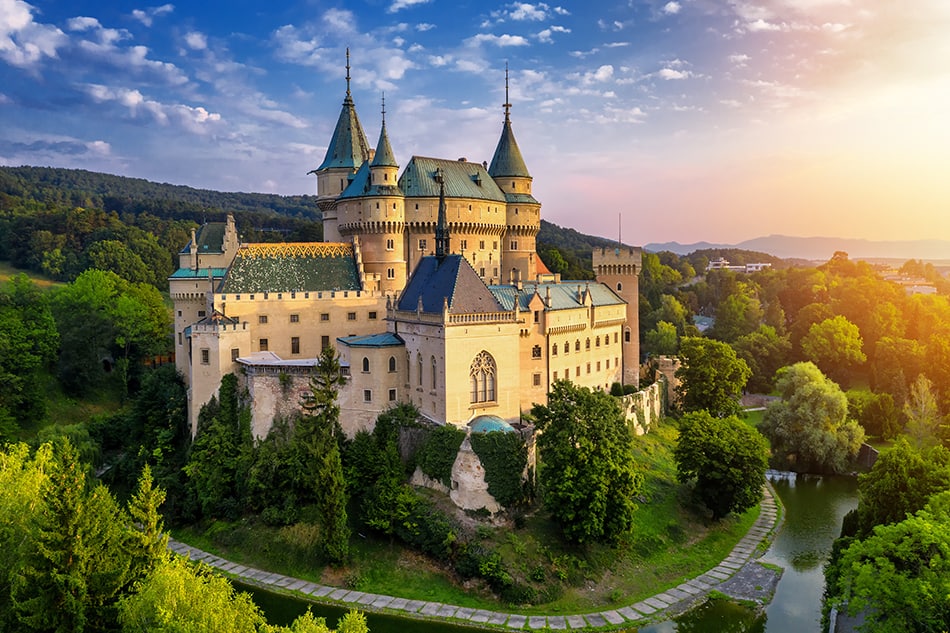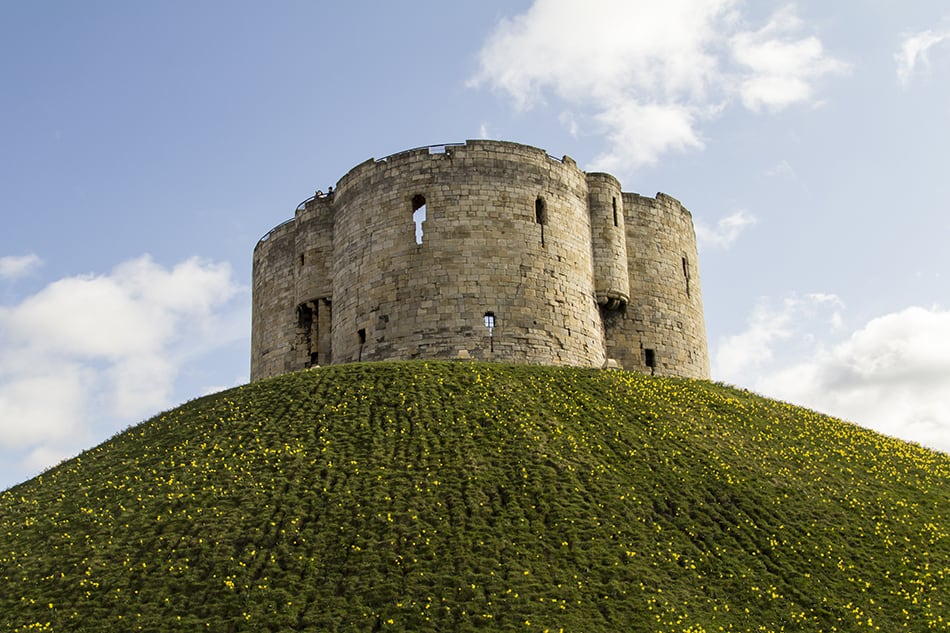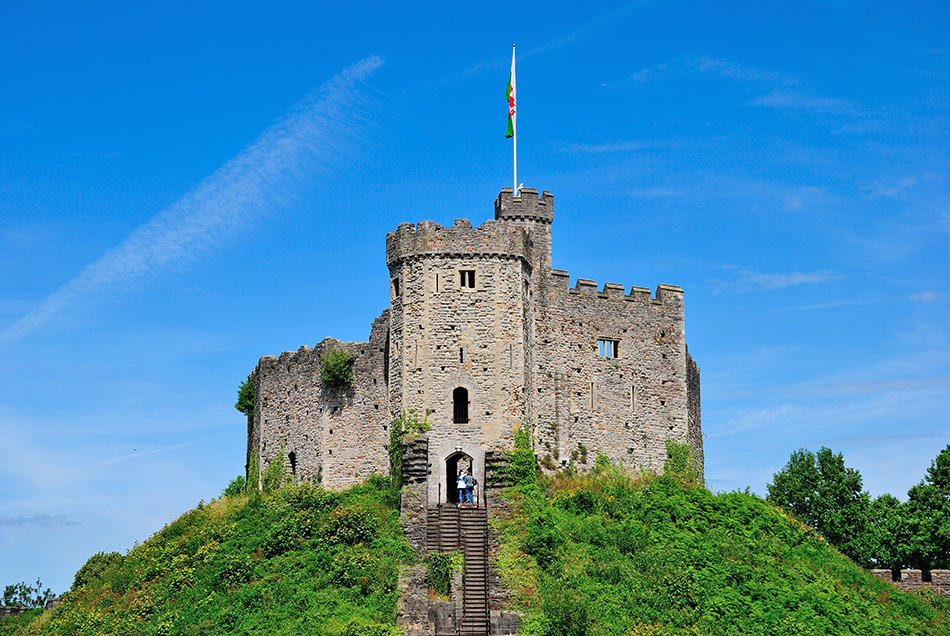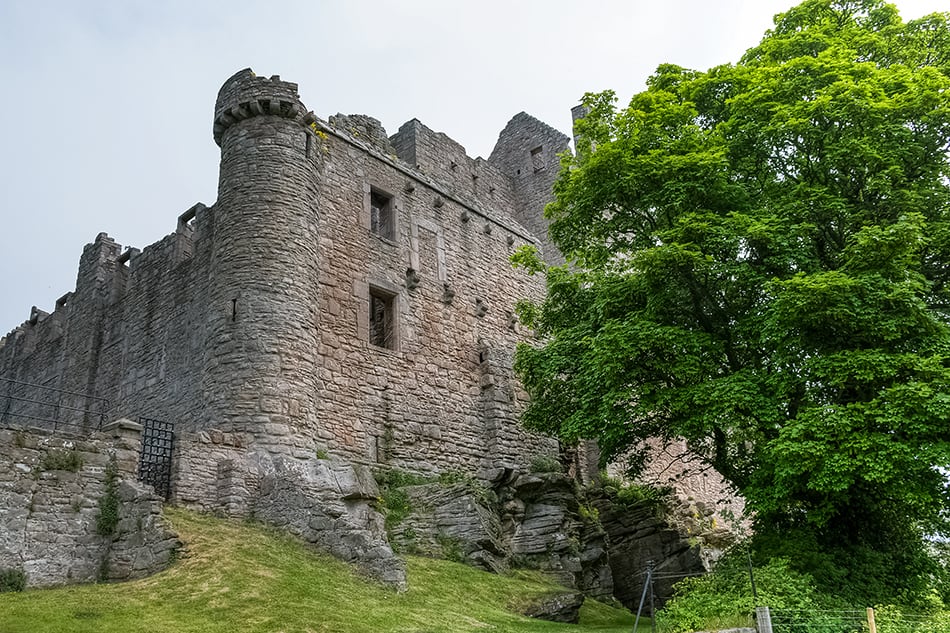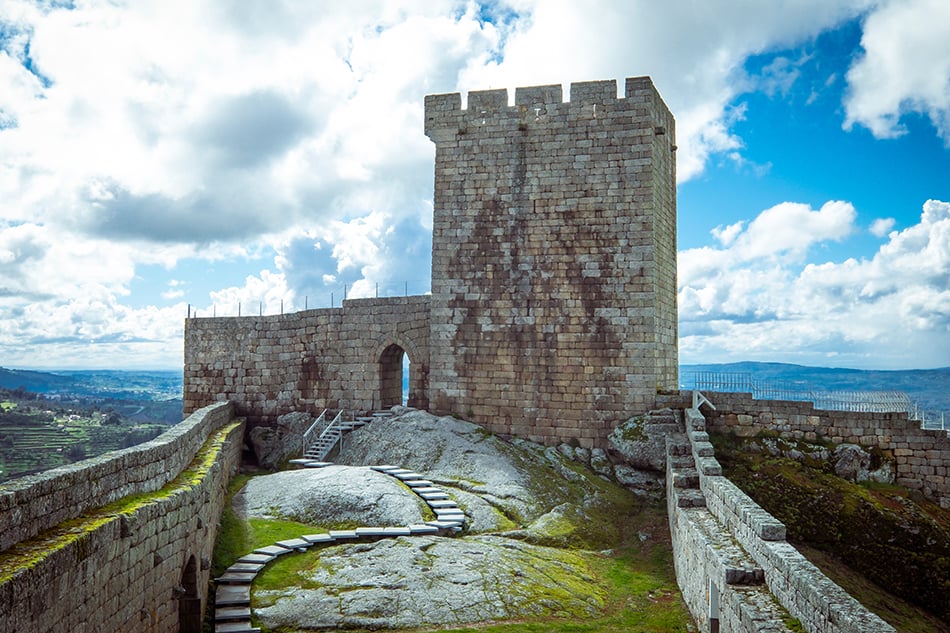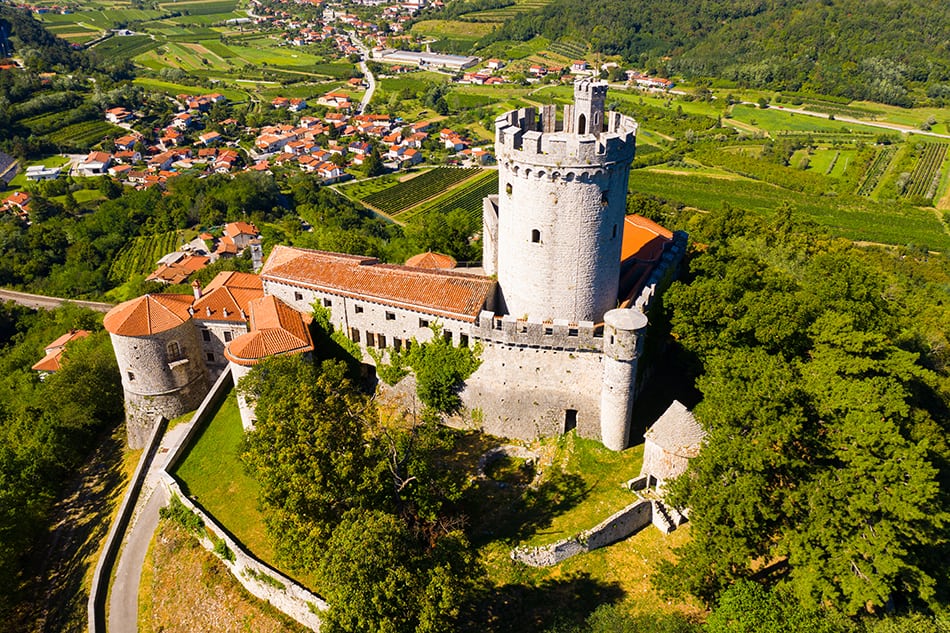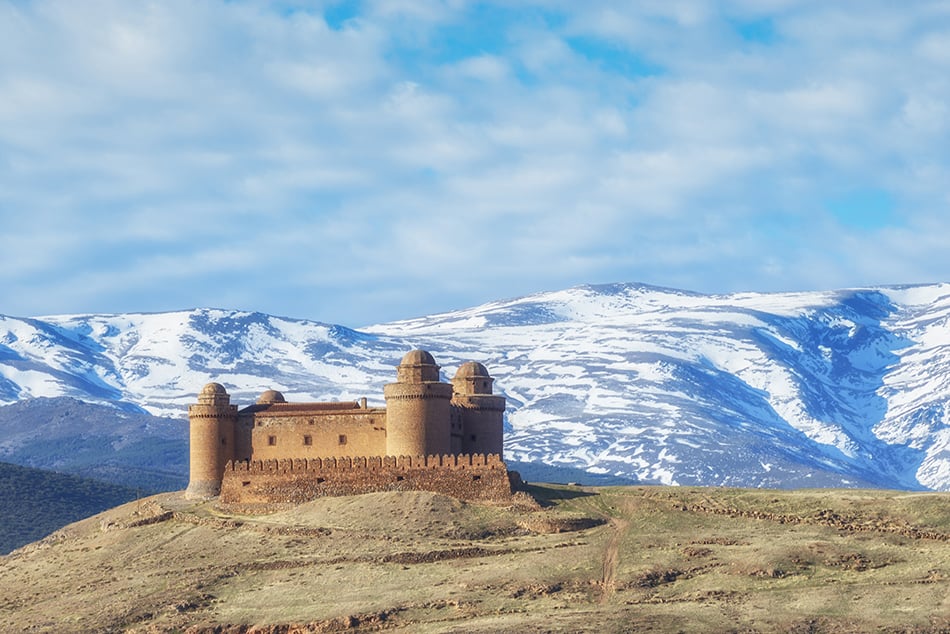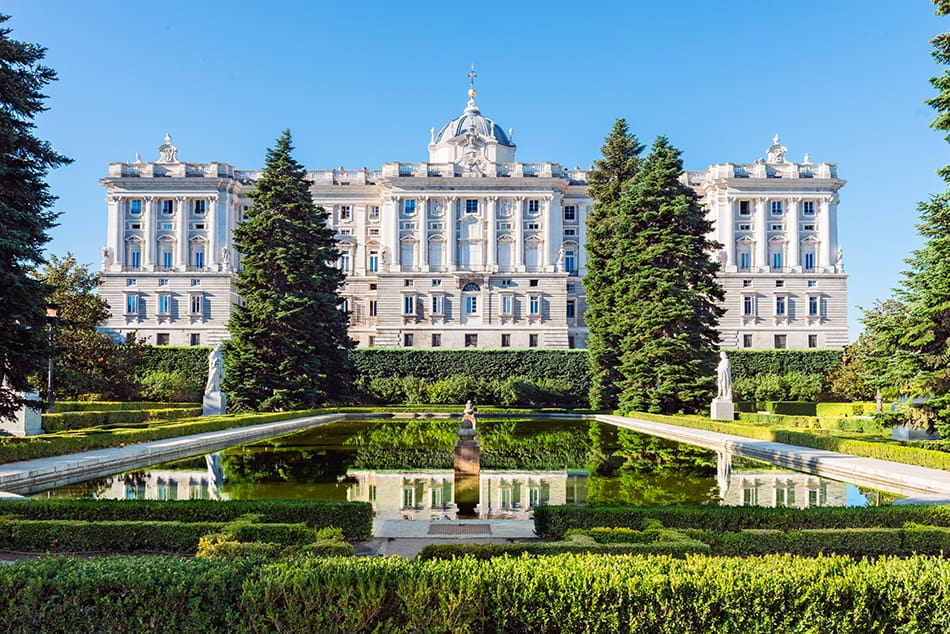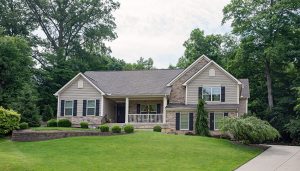A castle was essentially a fortified private home for the noble class, like kings and lords.
Castles can be found in many regions and many styles around the world. But, the European-style ones are possibly the most well-known. They were common, particularly during the Middle Ages. In this article, we’ll go over many types of castles from ancient time till now.
Medieval Castles
The Medieval years represented an active era of castle-building throughout Europe and the Middle East. They were built from around the 9th to 15th century and ranged from basic wooden structures to colossal stone buildings.
Medieval castles were usually situated on elevated land or near strategic landmarks such as river crossings or mountain passes. Their primary role was to allow the nobility to rule over the surrounding land. They were also strong forts that kept the aristocratic family and their prized possessions safe.
Naturally, the size of a castle was also a display of power and status. As medieval castles became more impressive, they required skilled teams of master craftsmen to build them. Stonemasons, blacksmiths, carpenters, architects, and other specialists set to work, sometimes for years, to construct a single castle and at a high cost.
Structure of a Medieval Castle
Early versions of the medieval castle were simple structures. However, as invasions increased and the need to defend lands became a priority, architects added more security features, and the castle became increasingly militarized.
The typical structure of a medieval castle included a moat, barbican, curtain walls and towers, fortified gatehouse, keep, and bailey.
The moat is an artificial ditch surrounding the castle. It was designed to be deep and, in some instances, was filled with water. It was a defensive measure and means of impeding invaders’ progress.
The barbican fortifies a gate or bridge in the castle. It’s usually a tower or stretch of wall designed to protect the castle’s outside entrance from attack.
The castle’s curtain walls surround its entire perimeter. They are solid and reinforced with stone and rubble to increase their strength against weapons and other projectiles. Curtain walls were constructed with various thicknesses. Some were dense enough to include small passages through them. The curtain walls are high and were sometimes built at a sloping angle to make them harder to scale.
Found at various intervals along the length of the curtain wall are the castle towers. Guards would be stationed in the tower buildings to fire at intruders trying to launch an attack on the walls.
With the castle’s main gate being one of its most vulnerable areas, fortified gatehouses became the standard way of protecting them. The fortification typically included two towers on either end of the gate. The gate, which is deep-set between the towers, is made of thick and heavy wood and is further reinforced by a moveable grid made from metal and more wood. Guards could ward off an attack by lowering the grid over the gate.
The keep, considered the safest place in the castle, is a heavily fortified tower featuring multiple stories and accessed via narrow staircases. During an invasion, castle residents would retreat to the keep as a last resort if attackers breached the rest of the castle. As such, the keep featured extra security measures. It was situated in the castle’s highest point to make it difficult to access. It also had incredibly thick walls and heavily guarded entrances.
The bailey, or inner courtyard, was a hive of activity in the castle, often incorporating several buildings, workshops, granaries and storage, food gardens, and space for domestic animals and livestock. In bigger castles, the bailey also included secondary residences.
Castle Styles
The four main castles styles – motte and bailey, shell keep, stone keep, and concentric – emerged over a period of a thousand years. Although castles eventually stopped being built, the royal palaces that emerged after are considered the modern equivalent.
Motte and Bailey
The motte and bailey is recognized as the first castle style to emerge in Europe. The castle’s name comes from two Norman French words – motte, meaning raised mound or clot of earth, and bailey, meaning enclosed land.
Motte and bailey castles were typical in Northern Europe during the 10th century. They were widespread across France and the Holy Roman Empire.
The castle design was introduced into England by the Normans when they invaded England following the Battle of Hastings in 1066. Architects quickly adopted the style, and it spread throughout the region thanks to the strength and simplicity of the structure.
Motte and bailey castles didn’t require significant skill to construct and used materials like wood and stone, which could be easily sourced from the surrounding lands. The motte was artificially created from a pile of earth and flattened at the top. It had a height ranging from 10 to 100 feet and a diameter of 100 to 300 feet.
A ditch was dug around the motte as a protective measure. Built on top of the motte and enclosed by a wall would be the tower keep, which housed the castle’s living quarters in its upper stories. In early motte and bailey castles, both the keep and walls were constructed from wood. To make it harder for them to be set on fire during an attack, they were sometimes covered with skins and hides.
The circular bailey would be situated outside the walls of the keep and below the motte. It would contain buildings like the hall, kitchen, stables, and workshops. The bailey also had a ditch dug around it, which joined up with the smaller motte ditch, creating a settlement shaped in figure eight.
Compared to later castles, the motte and bailey style was basic. Still, motte and bailey castles are interesting because of the variety of construction designs. Some had more than one bailey or motte or a keep built on stilts or double-ditches filled with water. Additionally, the surrounding landscape played a part in making each design unique.
Given that motte and bailey castles were constructed from timber, many of the actual structures are no longer standing. And the mottes are often mistaken for nothing more than a raised spot in the countryside offering a lovely view.
However, archaeological digs have uncovered foundations and artifacts that reveal what could have once stood on the site. An excellent example is the Granard Motte and Bailey, which is the highest motte in Ireland at 534ft above sea level.
By the 12th century, the popularity of motte and bailey castles started to wane.
We discussed in detail the motte and bailey visually in our post on the parts of a castle.
Shell Keep
Shell keep castles upgraded the security and strength of motte and bailey structures. A shell keep castle would be constructed within the walls of an existing motte tower, effectively encasing the wood tower in stone. The advantage of creating a shell keep in this way was that the castle didn’t have to be rebuilt from scratch and could remain fully functional. Building a shell was also less expensive than building the keep entirely from stone.
A shell keep castle usually had the same circular shape as the motte keep they encompassed, but this was certainly not the only way they were designed. They could be oval or polygonal-shaped. Although the idea was to make the castle stronger, the stone covering couldn’t be too thick or heavy, or else it would cause the motte to collapse, especially if the motte was artificial and made with little more than packed soil.
The risk of a motte collapsing under the weight of a stone building, even if it was just a thin shell, resulted in the popularity of shell keeps being short-lived. Only a few were ever built. By the 1200s, castle architects had entirely abandoned the shell keep and moved on to ambitious all-stone castles.
If you visit the site of a shell keep nowadays, what you’ll find is usually the external stone ring of the building as the inside timber elements have been destroyed with time. An example of a shell keep that is still standing today is Clifford’s Tower, which is situated on a high mound in North Yorkshire, England. The castle was built for William the Conqueror in 1068 and is part of York Castle. Although the keep is mainly a ruin, its two-story layout and other historical details can be seen.
Stone Keep
When someone says the word “castle,” a stone keep is the picture that comes to mind. The stone keep style became the predominant castle type from around the 11th century when some of the shortcomings of motte and bailey designs – rotting wood and the constant need for maintenance and vulnerability to fire – made them increasingly undesirable.
Designers built stone keep castles to last. Indeed, some continue to stand after hundreds of years. The keep’s entrance was situated several feet off the ground. It could only be accessed using a ladder or bridge and served as a deterrent to intruders, making the tower remarkably secure. The castle’s keep was tall and imposing, giving the lord a good view of his domain. They were significantly more expensive to build than shell keeps and were a symbol of prestige.
Stone keep castles are wonderful to visit if you want to see what an authentic castle looks like. One of the most famous stone keep castles is the White Tower at the Tower of London.
Square Stone Keep
Usually constructed in a square formation, stone keep castles had four towers at each corner connected by formidable stone walls. The walls of the keep were extremely solid and could be as much as 9 feet thick.
Unfortunately, stone keeps had a design flaw that made them relatively weak. Because the castle was built in the shape of a square, if attackers got close enough to its walls, they could dig a hole beneath a corner and wait for a part of it to collapse. This way, the castle could be overrun and taken. Also, the castle’s stony strength couldn’t protect its inhabitants from enemies who would surround it, sometimes for weeks, waiting for the people inside to surrender as they ran out of food.
Round Stone Keep
The round keep castle is also known as the Juliet. The round keep aimed to strike a perfect balance between the square stone keep and the shell keep. Like the square stone keep, the round version was also constructed from stone, but it was less expensive to build because it had fewer rooms and staircases. Fewer rooms could be seen as a disadvantage, but by the time round keep castles became the norm, the castle’s residential accommodations were commonly situated in other buildings on the grounds. Round stone keeps were used mainly for defense, and they served this purpose well. The round structure gave archers had a 360-degree view to shoot potential threats without having their vision blocked by corners.
The round stone keep was also sturdier than a square keep. The building was not as vulnerable as a square keep was to being collapsed by a projectile strike or mining targeting a corner. Round stone keeps could be further strengthened with a domed vault, rather than using a timber roof, which was common with the square keep.
Round keep castles usually had a basement level for storage, with two or three stories above. The tallest round stone keep constructed was the Coucy Château in France, which stands at 180 feet.
Concentric Castles
As weaponry became more powerful, the need for castles that could withstand an assault became more pressing. The concentric castle was developed around the 13th century, coinciding with the arrival of gunpowder in Europe. Suddenly, it wasn’t simply a battering ram coming for castle walls; it was cannons, which packed significantly more power and could do more damage.
Concentric castles employed a more sophisticated defense strategy than earlier castle styles. They featured two or more perimeter walls, with multiple fortified gateposts that intruders would need to breach to arrive at the castle’s keep. Besieging the keep was not an easy task. The layers of walls, known as curtain walls, were constructed for maximum deception. An invading army might be able to get in through the main gate. But once inside the first bailey, they would find that they still have to travel the entire length of the castle to gain access to the next gatepost, cunningly located on the opposite end. Making this crossing was dangerous because the defending army would be lying in wait to ambush them.
Furthermore, the exterior walls of a concentric castle were shorter than the interior walls. So, as attackers approached, they’d face return fire from guards posted on the exterior walls. Plus, they’d be easily spotted and fired upon by archers standing at the top of the interior walls.
Considered to be the perfect example of a concentric castle, Beaumaris in Wales boasts four concentric rings, a water-filled moat, and an impressive symmetrical design. Beaumaris was the residence of King Edward I and was built around 1284, although it was never actually finished. Caerphilly Castle is another castle in the concentric style, also in Wales. It took almost a decade to build.
By the time concentric castles became common, castles were massive and hulking stone structures that prized defense over everything else. Although they still housed families, significant portions of the castle were dedicated to fortification.
From Castles to Royal Palaces
The end of Europe’s Hundred Years War and the passing of the medieval era saw the demise of the feudal system and the rise of monarchies. Battles were no longer being domestically over land, and the need to protect realms and fiefdoms was over. Castles evolved from being the military fortresses they had become and transitioned into stately homes, bringing about the age of the royal palace.
After falling out of favor for a while, grand residences made a comeback. But these weren’t the cold and damp stone buildings of old; they were designed to be comfortable, beautiful, and elegant. They were places of leisure and luxury to live in and to host dignitaries at lavish banquets. Often decorated with expensive art, modern comforts, and the latest technologies of the era, the new palaces were an explicit statement of nobility, wealth, and status.
Gone were the high and multi-layered defensive walls, keeps, and baileys that were the staple of old castles. Early modern palaces favored vast gardens, with sprawling manicured lawns, fountains, and even large labyrinths. The palace buildings also had larger windows so that rooms were bright and airy.
To see the full opulence of a palace on display, look no further than the Versailles Palace in France, which was the principal residence of the French monarchy until the Revolution. The work began around 1661 to convert an existing structure comprising a small and simple hunting lodge surrounded by a moat into one of the world’s most famous and beautiful palaces. The palace features posh suites, massive halls and banquet halls, a grand canal, and magnificent gardens – all decorated with various marbles, precious metals, and artistic masterpieces. It couldn’t be further from the humble and rustic motte and bailey castle!
